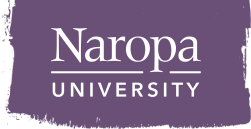Facts At A Glance
2023–2024 Profile
Total undergraduate enrollment: 368
Average age: 29
Student/faculty ratio: 9:1
Average class size: 13
Class size range: 2–25
Female 53%; Male 25%; Another 6%; Unknown 16%
American Indian or Alaska Native <1%
Asian 2%;
Black/African American 2%
Hawaiian or Other Pacific Islander 0%
International 3%
Latinx 12%
Two or more races 8%;
Unknown 8%
White, non-Hispanic 65%
In-state 40% · Out-of-state 57% · International 3%
Tuition & Indirect Costs
$34,600 Tuition & Fees
+$7,130 Student Housing at Snow Lion (shared room in an apartment)
+$2,947 Student Health Insurance
$44,677 Total
Most Naropa students do not pay this amount. Over 88% of our undergraduates were offered grants and/or scholarships to help with their education-related expenses in the 2022–2023 academic year
Average aid package: $36,018
Percentage of undergraduates receiving financial aid: 84%
Financial Aid applicants receiving grants or scholarships: 98%
Average total amount of scholarship/grants: $21,266
Total graduate enrollment: 749
Average age: 35
Average class size: 13
Class size range: 2–41
Female 58%; Male 21%; Another 6%; Unknown 15%
American Indian or Alaska Native 0%
Asian 3%
Black/African American 2%
Hawaiian or Other Pacific Islander < 1%
International 3%
Latinx 8%
Two or more races 5%
Unknown 7%
White, non-Hispanic 72%
In-state 43%; Out-of-state 54%; International 3%
Tuition
Tuition: $750–$1,100 per credit (varies per program)
Graduates receiving financial aid: 76%
Financial Aid applicants receiving grants or scholarships: 61%
Financial Aid applicants receiving loans: 96%
Retention and Graduation Rates
2020 National Survey of Student Engagement (NSSE) Institutional Summary
| Naropa University | Other Participating Institutions | |
| During the past year, students at Naropa: | ||
| Reported that some to many courses include community-based service-learning projects | 95% | 58% |
| Reported that Naropa emphasizes attending events that address important social, economic or political issues | 93% | 80% |
| Attended an art exhibit, play or other arts performance | 91% | 55% |
| Reported that their Naropa experience helped understand people of other backgrounds (economic, racial/ethnic, political, religious, nationality, etc.) quite a bit or very much | 89% | 62% |
| Connected learning to societal problems or other issues often or very often | 86% | 58% |
| Have completed, or plan to complete, a culminating senior experience (capstone course, senior project or thesis, comprehensive exam, portfolio, etc.) | 84% | 64% |
| Reported including diverse perspectives (political, religious, racial/ethnic, gender, etc.) in course discussions or assignments often or very often | 81% | 54% |



